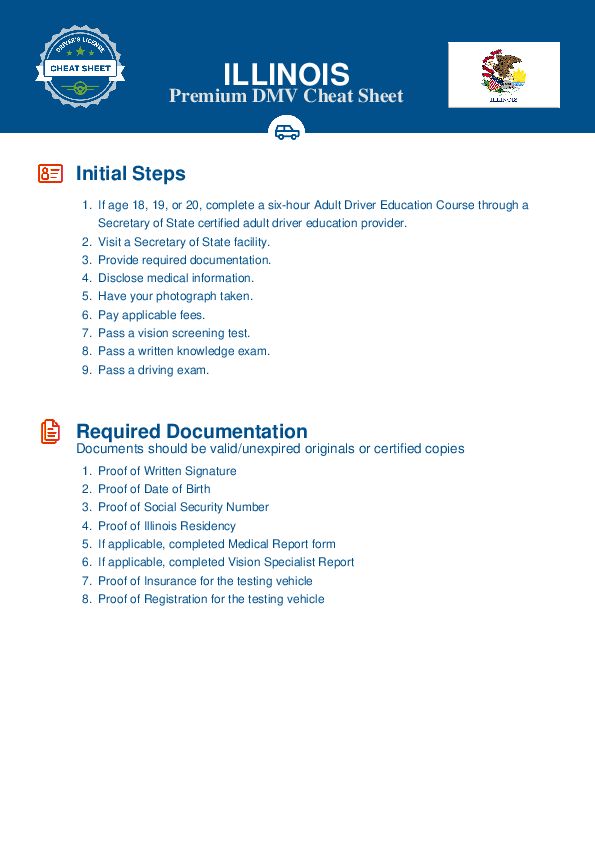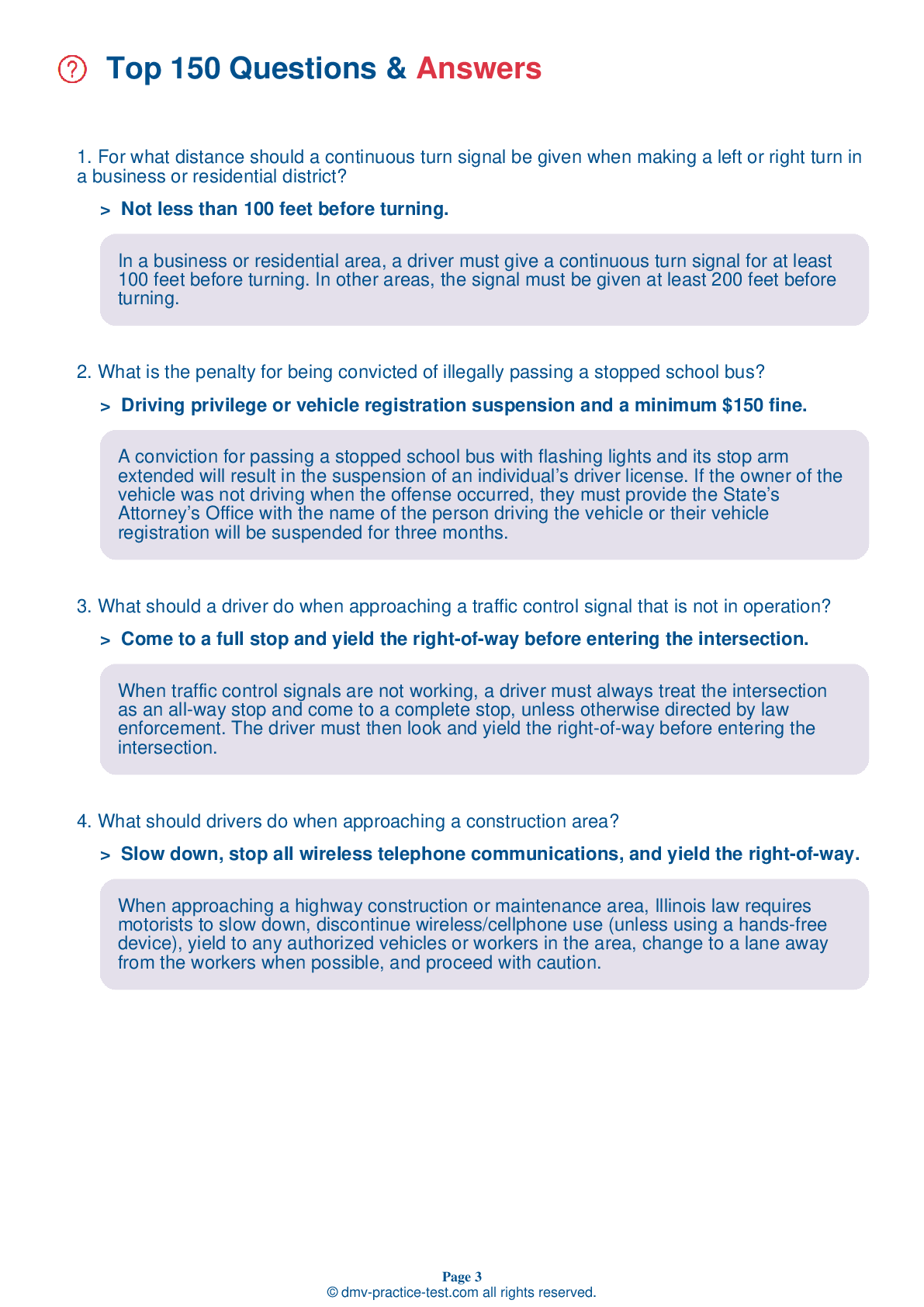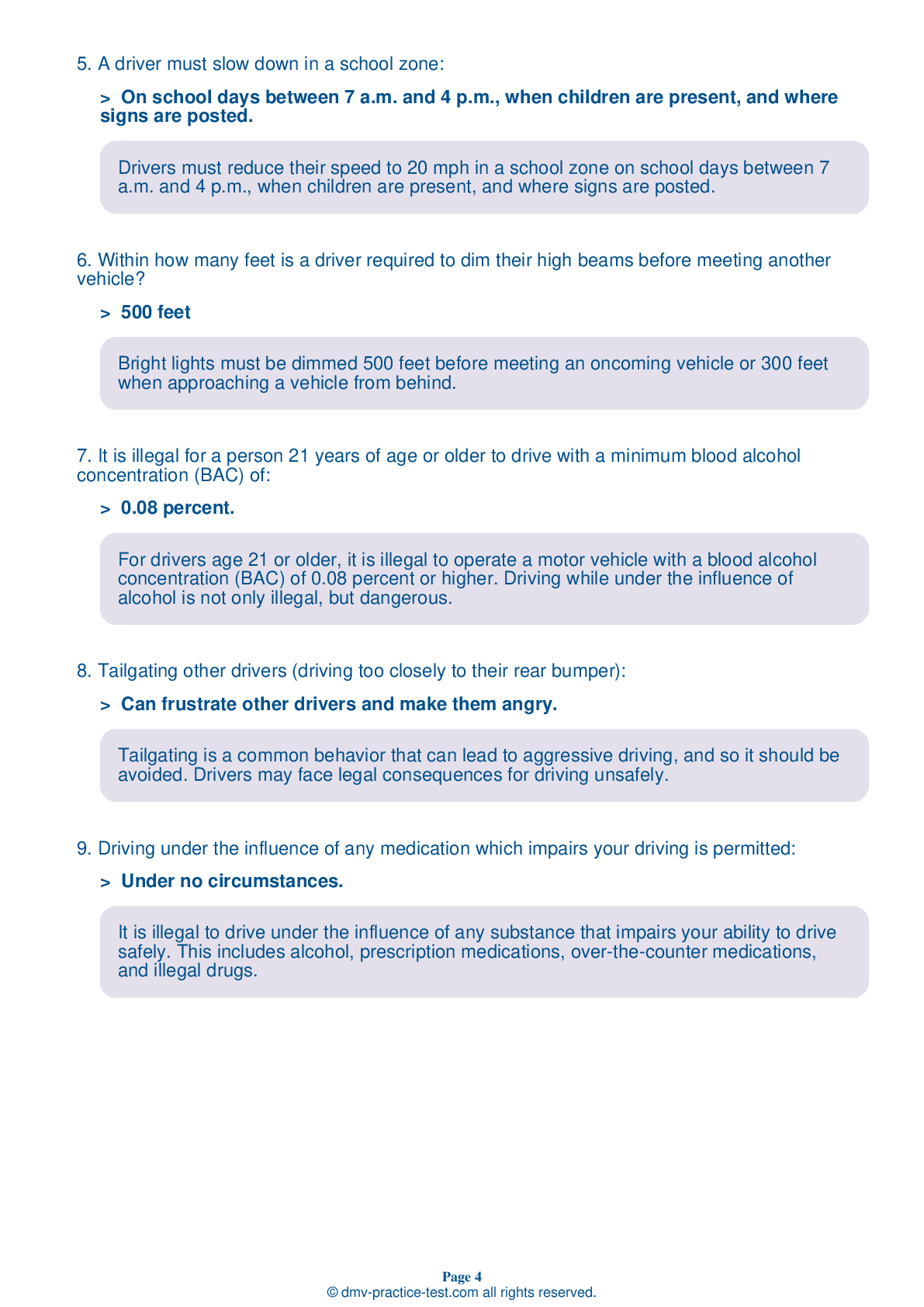FREE Illinois DMV Practice Test #11 Page 2 of 3
For January 2025, this set of Illinois DMV practise tests has been updated. It includes questions based on the most important traffic signs and rules for 2025 from the Illinois Driver Handbook. To study for the DMV driving permit test and driver's licence exam, use actual questions that are very similar (often identical!) to the DMV driving permit test and driver's licence exam.
Each question on the practise exam has a tip and explanation to help you recall the ideas. Questions about traffic rules, traffic signs, and driving statutes, as well as information from the Driver Handbook, will be included in the written portion of the official DMV test.
You must properly answer 38 of the 35 questions to receive a passing mark. To help you prepare for your Illinois instruction permit or driver's licence, take our DMV practise test.
The DMV exam is offered in a variety of languages.
Using any form of testing help will result in an automatic fail, and the DMV may take further action against your driver's licence, so avoid it.
13 . You should always travel:
The speed at which you should drive your vehicle depends on road conditions, the weather, and the legal speed limit. You may never drive above the legal speed limit. Decrease your speed when anything makes conditions less than ideal.
14 . If driving in fog, a driver should turn on the high beam headlights to increase their field of vision.
While it is not advisable to drive in fog, if you must drive in foggy conditions, you should drive with the headlights set on dim or use fog lights.
15 . This red and white sign means you should:
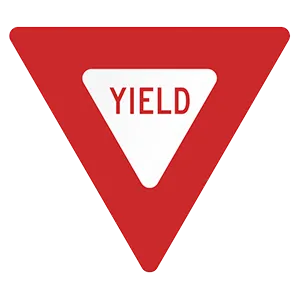
A three-sided yield sign indicates that you must slow down and be ready to stop, if necessary, to let any vehicle, bicyclist, or pedestrian pass before you proceed. In this case, you do not have the right-of-way.
16 . This road sign means:
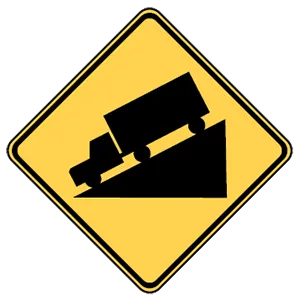
Warning signs provide notice to road users of a situation that might not be readily apparent and are usually yellow with black markings. This sign warns drivers of an upcoming steep hill. Drivers should adjust their speed accordingly to avoid collisions and brake damage.
17 . How should a driver proceed if, while within an intersection waiting to make a left turn, the traffic signal light turns red?
If driver making a left turn enters an intersection while the light is green, they may finish the turn even after the light turns red.
18 . An orange and red triangular sign on a vehicle always means:

